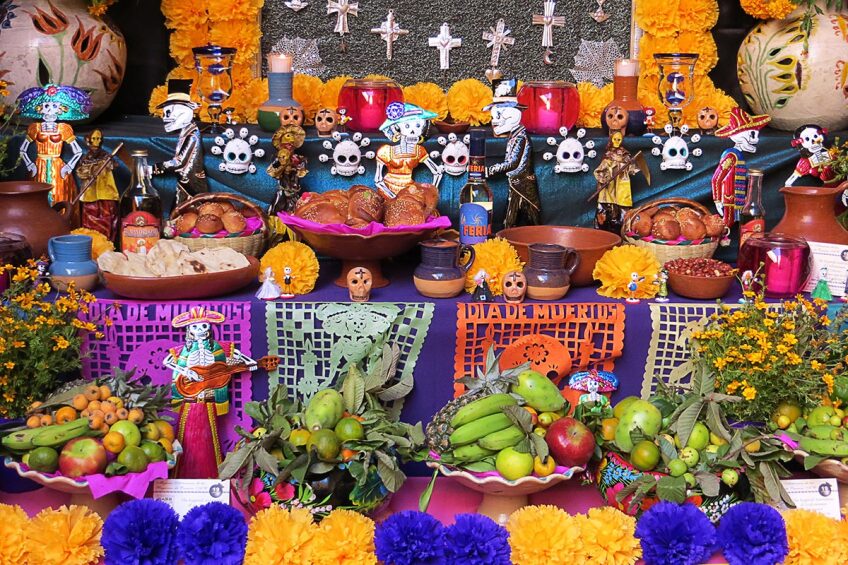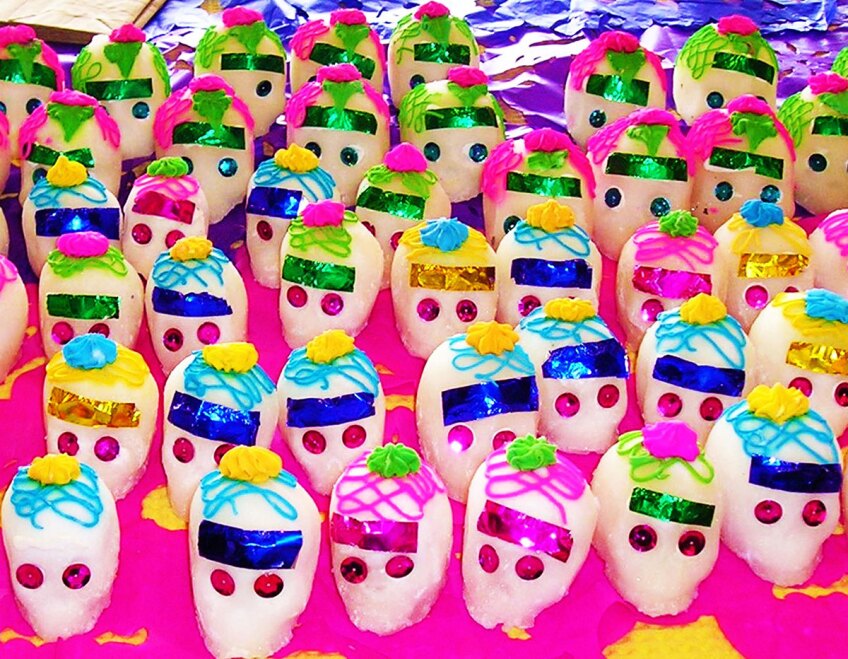Día de Los Muertos: A Holiday to Celebrate Life with Your Family
Here in the United States, Día de los Muertos (Day of the Dead) is perhaps the most misunderstood Latin American holiday (Cinco de Mayo comes in a close second, but we’ll save that for another day). So many people mistakenly think of it as a kind of Mexican Halloween that glorifies the macabre. But it’s actually the exact opposite.

Celebrated on Nov. 1 and 2, Día de los Muertos, as it’s called in Spanish, is a beautiful tradition that finds its roots in ancient Maya culture. Although it’s observed in several Latin American countries, it’s most closely associated with Mexico.
An Opportunity to Remember Loved Ones
Day of the Dead is a celebration and event in which people take the time to remember and honor family and friends who have passed away. Customs may vary between towns or regions, though. Some, for example, create beautiful displays in their homes, while others go to the cemeteries to prepare a feast and decorate the gravesites of their dearly departed. And some Indigenous people believe that the souls of their family and friends gather at major archaeological sites, such as the pyramids of Teotihuacán outside Mexico City or Monte Albán in Oaxaca. It is believed that they then find their way back home by the church bells in their hometowns or by following trails of cempasúchiles (marigolds).
Many Americans have been so attracted to this beautiful and colorful holiday that it is now being observed more and more in the United States … especially throughout the Southwest. Part of the attraction is the healing effect it has for families grieving the loss of loved ones. Rather than focusing on the loss, it provides people the opportunity and the physical outlet to remember the beauty of the person and the life that they lived.
Building an Ofrenda

In the week leading up to the actual holidays, many families begin preparing their home altars — typically called ofrendas (offerings) — by purchasing food, flowers and decorations. Families don’t worship at these altars. Instead, they are more like tributes in honor of the person who died.
Panaderías (bakeries) are filled with pan de muerto (bread of the dead), and florists sell out of every kind of flower, especially the cempasúchil. Stores are filled with sugar skulls of every size, and museums proudly display their exhibits of skeleton figurines dressed as mariachis or everyday workers, such as bakers, taxi drivers or doctors.
Every ofrenda is unique. Constructed with three to seven levels, it is lovingly decorated by all family members with pictures of the ones being remembered as the focal point.
Gifts of water, salt, fruits, flowers (especially marigolds), candles and more may be placed on the ofrenda. Each item has symbolic value. Some of the deceased's favorite foods and other items may also be included to honor their memory or recall their habits.
Calaveras, or skulls, are frequently placed on the altar as decoration. Sugar skulls, especially, have become quite popular. As their name suggests, these little skulls are made of sugar and taste like candy. They are usually decorated with icing to make them more fun and colorful. Not only are they great for decorating, but they are often delicious, too. Smashing them with your fist and eating the shattered pieces is a way of showing figuratively that you've conquered death.
The calaveras are often misunderstood by people who do not know the history of the holiday. They are not intended to be scary, but are symbolic: The skull represents the death of the body or the passing away of the person, and the colorful designs represent the beauty of their life.
Miniature skulls and skeletons, therefore, are not thought to be frightful and are often left as toys for the deceased or to poke fun at death.
Books, Videos and Crafts

If you are looking for educational resources to introduce or share the holiday with your children, consider these excellent materials:
Books
- "Día de los Muertos" (Ages 4-8) written by Roseanne Greenfield Thong and illustrated by Carles Ballesteros is a visual delight that introduces children to the holiday by following the story of a family preparing for Day of the Dead.
- Duncan Tonatiuh's "Funny Bones: Posada and His Day of the Dead Calaveras" (Ages 6-10) is a wonderful look at the man behind “La Catrina” and other calaveras, which are short, humorous poems that joke about death in rhyme.
- My "Day of the Dead: Preschool Activity Book" (Ages 3-5) reinforces preschool concepts with simple themed activities for preschoolers at various levels.
- For older children, the "Day of the Dead Activity Book" (6-9) by Karl Jones is an engaging favorite that also includes an actual punch-out ofrenda for kids to assemble.
Videos and Crafts
- Muy Bueno Cookbook has several remarkable videos on Day of the Dead, including this one told from the perspective of the owner’s young son.
- Watch thisshort video segment on making ofrendas from Craft in America featuring Ofelia Esparza, a skilled altar builder — or altarista — then try your hand at making your own altar! Bonus points if you get creative with the face paint and decorate your own sugar calaveritas.
- The CGI 3D Animated Short Film "Dia De Los Muertos" by Team Whoo Kazoo and TheCGBros is only a little over 3 minutes long, but it’s a fantastic watch for upper elementary and middle school students.
- Watch the Día de los Muertos special on KCET's "Artbound" below, which also features master altarista Ofelia Esparza.
Online Activities, Lesson Plans and More
- The Smithsonian’s Latino Center has a fantastic website full of educational resources dedicated to Día de los Muertos, including online exhibits, an interactive iBook and more.
And finally, check out thisfree digital classroom on Day of the Dead that was created by a group of educators. You’ll find a comprehensive collection of videos and informational slides for learning about the holiday.




